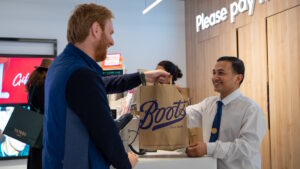By Julien Rio, Senior Director of Marketing at RingCentral
We’re in unchartered waters when it comes to retail. Never in recent history have consumer spending habits changed so drastically over the course of a few months. Of course, the Great Recession of 2008 slowed spend for five consecutive quarters, however, the cuts triggered by Covid-19 are surfacing in new, unforeseen ways. We’re twelve years on, and in an era that’s even more reliant on digital. Consumers are able to purchase items much more easily and quickly, and likewise, return orders at an equal rate. The key difference between the 2020 economic downturn, then, is customer expectation. But, how can businesses ensure their customer service teams can keep up with demand, and by result, keep consumers loyal?
In short, the strategy is going to need some modification. With heightened demand comes greater pressure on customer service teams who, unfortunately, have been reduced in size and capacity this year. Remaining customer service agents no longer have the time to grant each customer tailored, personalised experiences. Recent predictions reveal that more than half of all Christmas gifts, clothes and household products will be bought online this year, up from 31% last year. And, unfortunately, more remote purchases equal greater strain on customer service agents.
From the agent side: Empowering and equipping remote agents
First and foremost, we need to consider how customer service teams are currently working. Just as standard office workers are now working from kitchen tables and communicating with their colleagues exclusively via digital tools, so are customer service agents. Of course, there is an element of trust that comes with building a remote employee base. Agents are now wearing many hats, so require increased flexibility and compassion from team leads. Business leaders need to consider how to offer the right tools, support, systems and guidance, while also keeping up performance. A new phase of training will need to be developed specifically for remote customer service teams, but in the shorter term, it’s about trust and accountability.
From the customer side
So, once processes for remote agents are in check, how do we prepare for the upcoming spending spikes? Acknowledging the power of effective communication with customers should be at the core of every retail game plan, and with the use of digital channels booming, this means that customer call deflection is a vital tool. As explained in a recent white paper, the goal of call deflection isn’t to avoid interaction with the customer – quite the opposite. Deflecting calls, either before or during the call itself, and pointing callers towards more convenient channels boosts the customer experience.
Call deflection reduces costs and streamlines contact centre activity, enabling agents to handle more interactions via digital channels, keeping call times down. This is particularly important when dealing with increased consumer communication spurred on by events like Black Friday. It also enables them to manage more complex actions, such as online payments, as well as offering out of hours service. Customers are increasingly dissatisfied with having to deal with queries over the phone, as they are usually restricted to calling within business hours and often have to endure long wait times. This kind of ‘synchronous’ or real-time communication also has the added complication of being session-based. If the call gets cut off or the customer needs to call back for any other reason, they have to start again from the beginning.
Switching to asynchronous channels solves this problem. Using digital channels such as Facebook Messenger or WhatsApp enables customers to send a message at any time and receive a notification when the company responds. This also means that a history of all the interactions is saved. The ability to pick up where the customer left off enables continuous conversation across devices and platforms.
When using call deflection, it’s important to find out what channels your customers are using today and adopt those digital channels into your action plan. Demographics and location can affect the type of devices and channels used.
The perfect match
So, it’s about the two-tiered approach. Before implementing new technical strategies to engage customers, it is essential customer service teams are prepped to take on the next wave of festive demand. Their teams are smaller in size, and most notably, now working remotely. This will be the first Christmas that sees online spending overtake the high street, making the anticipated impact on customer agents astronomical. Then, on the consumer side, businesses need to be ready to hit the green button on asynchronous communication. Tools that streamline conversation—and allow customers to reach out to agents over the phone, email, social or on live chat—need to be tried and tested. The 2020/2021 festive season will undoubtedly be demanding, but the right internal support for colleagues paired with a smart, digital-savvy strategy, will put businesses one step ahead.












